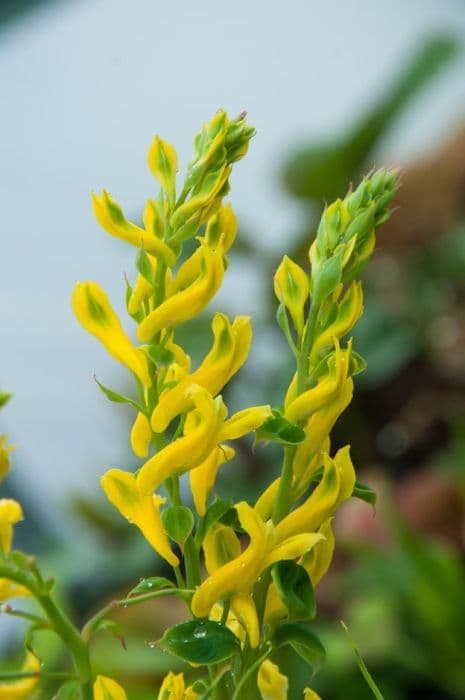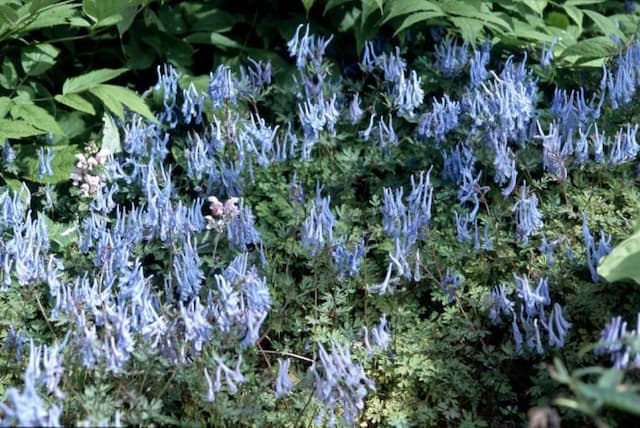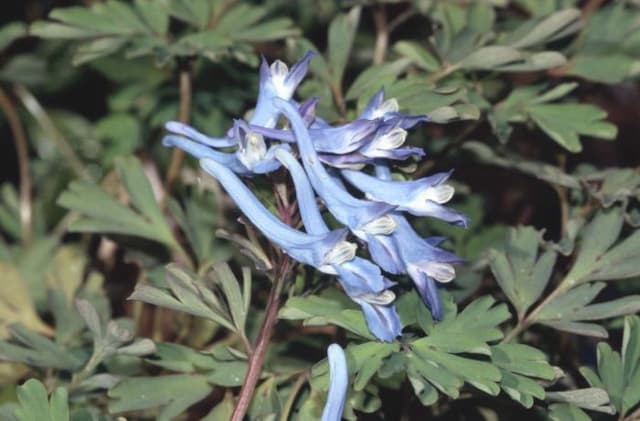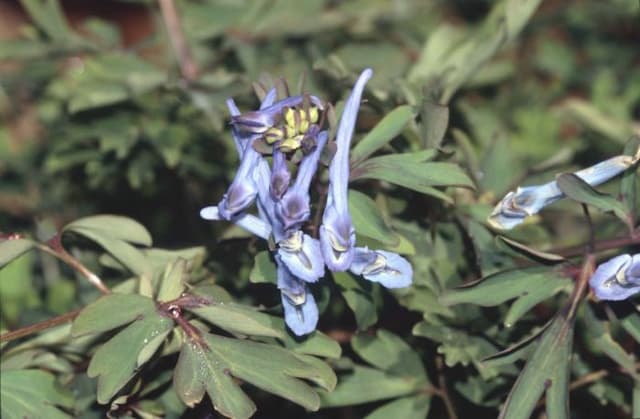Bristly Poppy Papaver pilosum subsp. spicatum

ABOUT
This plant belongs to the poppy family and is characterized by its strikingly beautiful flowers. The blooms are typically red to orange in color, often with a darker basal spot, and they have a delicate, tissue-paper-like texture. The petals are slightly crinkled, adding to their charm. In the center of the flower, there's a noticeable cluster of stamens that surround a singular style, which adds to the ornamental appearance of the flower. The leaves of the plant are deeply lobed and have a feathery appearance, which gives the plant a soft, lacey look. The foliage color can vary from a light green to a bluish-green, depending on various factors such as sunlight and soil type. The stems are erect and can be either smooth or covered with fine hairs, which is a characteristic trait within the poppy family. The plant bears a capsule-like fruit that contains numerous small seeds. These seeds can be dispersed by wind when the capsule opens, allowing for natural propagation. Overall, the poppy provides a splash of vibrant color in garden settings and has been a favorite among gardeners for its showy flowers and easy-care nature.
About this plant
 Names
NamesFamily
Papaveraceae
Synonyms
Unfortunately, there are no widely recognized common names for Papaver pilosum subsp. spicatum.
Common names
Papaver spicatum, Papaver pilosum var. spicatum.
 Toxicity
ToxicityTo humans
The plant in question is commonly known as a type of poppy. Some poppies contain alkaloids that can be toxic when ingested, potentially leading to symptoms such as nausea, vomiting, drowsiness, confusion, respiratory depression, and, in severe cases, coma or death. While the exact toxicity of Papaver pilosum subsp. spicatum is not widely documented, as a precaution, ingestion of this or any poppy species should be avoided. If ingested, medical attention should be sought immediately.
To pets
Poppies, like Papaver pilosum subsp. spicatum, are generally considered toxic to pets. They can cause poisoning when ingested, leading to symptoms similar to those seen in humans. In pets, symptoms may include lethargy, loss of coordination, pupil dilation, vomiting, and in extreme cases, seizures or coma. As with human exposure, the toxicity can vary, but it is best to keep pets away from this plant and seek veterinary care immediately if ingestion occurs.
 Characteristics
CharacteristicsLife cycle
Perennials
Foliage type
Deciduous
Color of leaves
Green
Flower color
Yellow
Height
1-2 feet (30-60 cm)
Spread
1-1.5 feet (30-45 cm)
Plant type
Herb
Hardiness zones
8
Native area
Turkey
Benefits
 General Benefits
General Benefits- Ornamental value: Papaver pilosum subsp. spicatum, commonly known as South Caucasian Poppy, adds visual interest to gardens with its striking flowers and unique form.
- Pollinator attraction: The blooms of the South Caucasian Poppy attract bees and other pollinators, thereby supporting biodiversity and contributing to the health of the local ecosystem.
- Food source for wildlife: The seeds of the South Caucasian Poppy can provide a food source for birds and small mammals.
- Soil improvement: Like many plants, the South Caucasian Poppy can help to prevent soil erosion and improve the soil's structure over time.
 Medical Properties
Medical PropertiesThis plant is not used for medical purposes.
 Air-purifying Qualities
Air-purifying QualitiesThis plant is not specifically known for air purifying qualities.
 Other Uses
Other Uses- Papaver spicatum can be used as a natural dye for textiles, providing a range of colors from yellows to greens depending on the mordant used.
- The seeds of the plant are edible and can be used as a flavoring agent in baking, similar to poppy seeds from the more commonly known Papaver somniferum.
- In traditional arts, the petals of Papaver spicatum may be pressed and included in botanical papermaking for decorative purposes.
- The stems and seed pods can be dried and used in flower arrangements and crafts for their distinctive appearance.
- Gardeners may use the dried seed pods of Papaver spicatum as natural mulch, which can help suppress weeds and retain soil moisture.
- The plant can be utilized as part of a natural insect management strategy in gardens, attracting beneficial predators that feed on pests.
- Papaver spicatum is sometimes included in educational botanical collections for its distinctive morphological features, aiding in plant identification studies.
- The sap of Papaver spicatum can be used as a natural adhesive in certain traditional crafts and bookbinding practices.
- This plant can be incorporated into landscape design as a natural border or to create visual interest due to its height and showy blooms.
- As a symbol in art and literature, Papaver spicatum may represent sleep or oblivion, aligning with the symbolic use of other poppy species.
Interesting Facts
 Feng Shui
Feng ShuiThe Prickly Poppy is not used in Feng Shui practice.
 Zodiac Sign Compitability
Zodiac Sign CompitabilityThe Prickly Poppy is not used in astrology practice.
 Plant Symbolism
Plant Symbolism- Peace - Similar to other poppies, Papaver pilosum subsp. spicatum, commonly known as the Southwestern Turkish Poppy, is often associated with peace and restfulness, echoing the sedative effects some poppies are known for.
- Remembrance - Poppies in general are symbols of remembrance, especially for those lost in war, as immortalized in the poem "In Flanders Fields" after World War I.
- Sleep and Death - The connection to sleep comes from the opiate properties of some Papaver species, which can induce sleep. This extends metaphorically to death, sometimes symbolizing eternal rest.
- Resurrection and Eternal Life - In Christian symbolism, the red color of some poppies is associated with Christ's death and resurrection, pointing towards the promise of eternal life.
 Water
WaterThe plant commonly known as Long-headed Poppy should be watered deeply until excess water starts to drain from the bottom of the pot, ensuring that the soil is moist but not waterlogged. During the growing season, watering should be done once every seven to ten days, depending on the temperature and humidity levels. It is important to reduce the frequency of watering during the dormant period (usually in the winter) to prevent root rot, which might be around once every two weeks. A good rule of thumb is to provide approximately 16 to 32 ounces of water for smaller pots and up to 1 gallon for larger pots during the active growth phase. Always check the top inch of the soil for dryness before the next watering to prevent overwatering.
 Light
LightThe Long-headed Poppy flourishes best in full sun conditions with at least six hours of direct sunlight daily. It can tolerate partial shade, but its blooms may not be as prolific. The ideal spot for this plant would be in a south-facing garden or a windowsill where it is exposed to ample sunlight, but it should be protected from the harsh midday sun in very hot climates.
 Temperature
TemperatureFor the Long-headed Poppy, the ideal temperature range is between 60°F and 70°F during the day. Nighttime temperatures should ideally be a little cooler but should not drop below 50°F for optimal growth. This plant can generally withstand temperatures up to 80°F, beyond which protective measures might be needed to ensure the plant does not overheat.
 Pruning
PruningThe Long-headed Poppy should be pruned to encourage healthier growth, maintain plant shape, and increase air circulation. After flowering, spent blooms should be removed to tidy the plant and encourage additional blooms. Dead or damaged stems can be cut back to the ground. The best time for pruning would be late autumn or early winter, when the plant has finished blooming and is entering its dormant phase.
 Cleaning
CleaningAs needed
 Soil
SoilLong-headed Poppy thrives in well-draining soil with a pH between 6.0 to 7.5. A mix of loam, sand, and compost is ideal, ensuring good drainage and moderate fertility. Avoid waterlogged conditions and overly rich soils that may encourage foliar growth at the expense of flowers.
 Repotting
RepottingLong-headed Poppy, being a perennial, does not typically require frequent repotting. Repotting should be done every 2 to 3 years, or when the plant shows signs of being root-bound or the soil appears exhausted.
 Humidity & Misting
Humidity & MistingLong-headed Poppy prefers moderate ambient humidity but is quite adaptable. Avoid excessively high humidity environments as they may promote fungal diseases.
 Suitable locations
Suitable locationsIndoor
Provide bright light and good air circulation indoors.
Outdoor
Plant in sunny area with well-draining soil.
Hardiness zone
3-9 USDA
 Life cycle
Life cyclePapaver pilosum subsp. spicatum, commonly known as Southwest Asian poppy, begins its life as a seed that germinates in favorable conditions, typically requiring well-drained soil and a period of cold stratification. After germination, the seedling emerges, developing a rosette of hairy, lobed leaves close to the ground. As the plant matures, it elongates to form a flowering stem and produces solitary, large, and colorful flowers, each with four petals and numerous stamens. Following pollination, often by insects, the flowers develop into a capsule-like fruit, rich with numerous small seeds. These seeds are dispersed by wind, animals, or other mechanical means, spreading to new locations where they lie dormant until the next season or until conditions are suitable for germination. This annual or biennial plant completes its life cycle with the death of the flowering individual, relying on its seeds to propagate and ensure the survival of the species.
 Propogation
PropogationPropogation time
Spring to early summer
The most popular method of propagating Papaver pilosum subsp. spicatum, commonly known as the rough-haired poppy, is through seed. Sowing can be done in early spring directly into a well-prepared seedbed with soil that is rich and well-draining. The seed is very fine and should be sown on the soil's surface, lightly pressed in, and kept moist until germination occurs. It is crucial to avoid covering the seed with soil as light is needed for germination; a fine mist spray is useful for keeping the topsoil moist without disturbing the seed. Germination usually happens within 2 to 3 weeks, and once seedlings are large enough to handle, they can be thinned out or transplanted to their final growing positions. Care should be taken not to disturb the roots too much during transplanting as poppies do not appreciate being moved.









